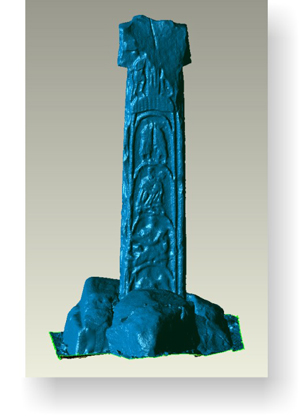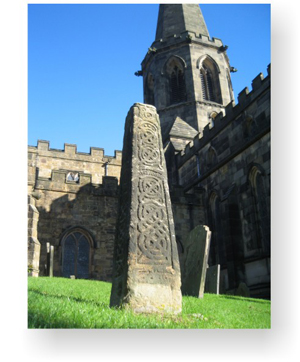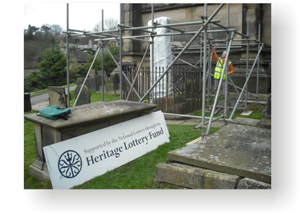Decoding the Bakewell Crosses
 |
 |
 |
In and around Bakewell church, Derbyshire, there are 37 pieces of Anglo-Saxon and Anglo-Scandinavian sculpture representing one of the biggest single collections of stonework from this period. Interpretation of the symbols and carvings depicted on the stone suggest that some of the pieces may date to the first half of the 10th century, a period when the nascent nation that would become England was emerging from the generations of conflict between the Saxon Kingdoms and the Scandinavian settlers of the Danelaw.
Despite the importance of this collection, they are currently poorly understood, and their true place in history is not known with any certainty. In order to better understand and interpret the sculpture, and in particular the two free-standing cross shafts, ARS Ltd have joined with the Parochial Church Council of Bakewell Church and Bakewell and District Historical Society to undertake a series of investigations funded by the Heritage Lottery Fund.
This exciting project will involve a detailed study of the sculpture through lookign at text records and antiquarian illustrations, and also a detailed laser survey to capture all the remaining detail, in partnership with Birmingham University. This will also help to assess the condition of the stones, which is especially important with the two cross shafts that are open to the elements.
One of the main questions that needed to be answered was to assess whether the high cross (the larger of the two cross shafts) was in its original position, as knowing whether the cross is in-situ, or has been brought into its current position at a later date, is key to identifying a suitable method for future conservation.
To find out this vital information, a small excavation was undertaken around the base of the cross to examine the deposits around and beneath the sculpture, and try to obtain some dateable material to help answer the question. What was uncovered was a fascinating sequence of deposits including a substantial foundation trench with dressed stone that must have been part of a now-lost building, possibly associated with the earliest church on the site. Beneath this wall foundation there was a grave containing the remains of an adult, probably female, and a very young baby. It was clear from the sequence of deposits that the wall dated to a later period than the burial, and in turn the cross was later still than the wall foundation.
A radiocarbon date on the adult burial showed that they died in the period after the Norman Conquest, and most likely in the late 11th or early 12th century. Although this meant that the burial, and therefore the wall foundation were not Anglo-Saxon as was originally suggested, it also meant that the cross is not in its original position and was moved here from somewhere else. This excavation was filmed for BBC's Countryfile programme, and will be aired on Sunday 6th May 2012.
The next stage of the project will be a larger community dig at a site near to Bakewell where folk memory suggests there was once a standing stone cross, possibly the original location of the high cross in Bakewell churchyard. Although places are going fast, if you would like to volunteer to take part in the excavations, please enquire via email using this link.
If you want to know more about the sculpture at Bakewell Church, it can be visited free of charge where there are information boards about the history and archaeology of the church and its features.
The report detailing the results of the excavation around the base of the cross will soon be available for download from this page, so please check back soon.